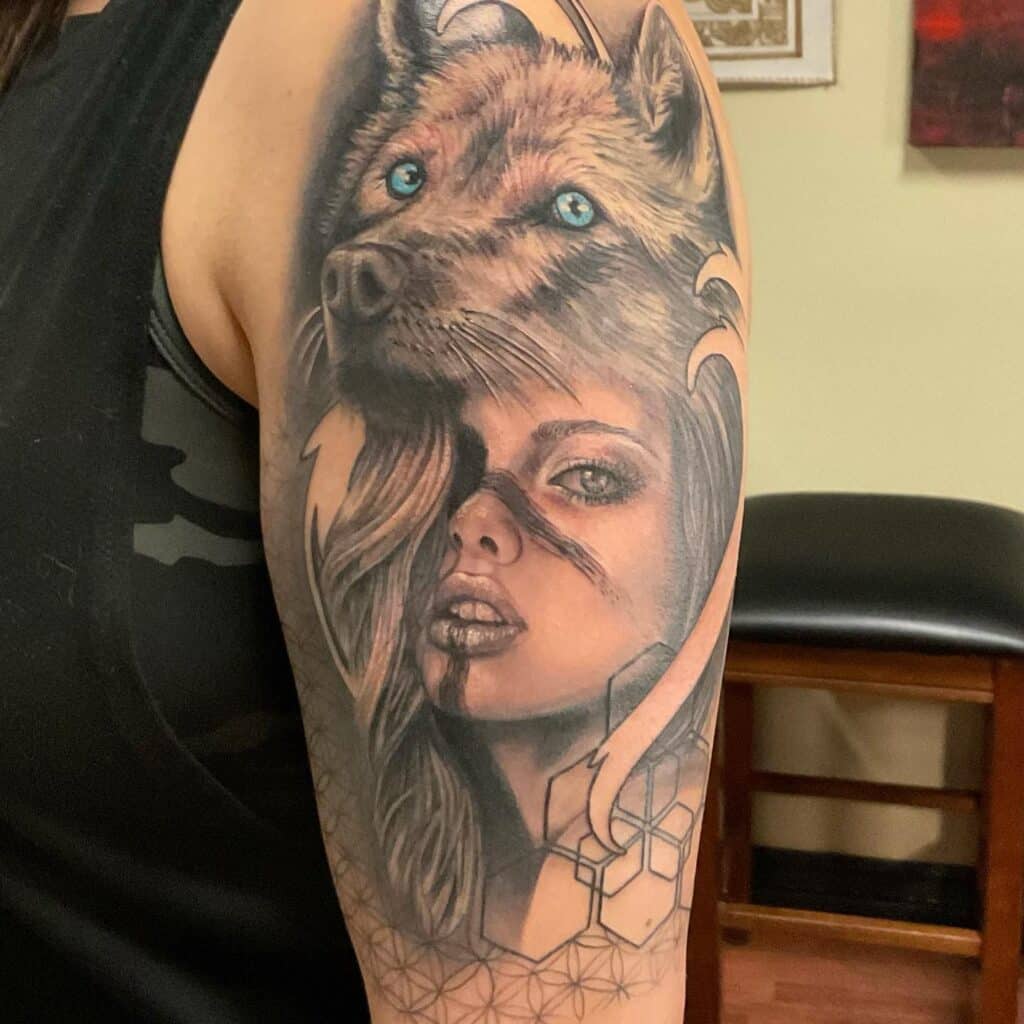THERE IS A LONG TRADITION OF BODY MODIFICATION AMONGST NATIVES

Whether it's natives in North America, or native cultures elsewhere, it's not uncommon to find a long and rich history of tattoos and other body markings. Some are linked to status, others station in the tribe, while others were a right of passage. Whatever the reason, men, women and children could all be seen bearing one kind of marking or another. The top four being painting, tattooing, piercing and scarification.
PAINTING
Natives in many cultures choose more temporary body markings, very commonly practiced with the Native American tribes, for example. These types of markings were very much used ritualistically, going on a hunt or a battle and for binding ceremonies/marriage. Not terribly common with women in North American tribes, but seeing women with body paintings in South American, Incan and Mayan cultures was just as common as with men. Temporary markings weren't exclusive to the American tribes and cultures, it was also common to see in Aboriginal, Nordic, Gaelic, amongst many other cultures.
Painting was most often seen and used before a battle or a particularly important religious ritual. Native Americans were well known to even give paint markings on their horses before going off to battle. In modern times, these same tribesmen paint their horses for demonstration and to display their history to outsiders.
TATTOOING
One of the more prominent body modifications that can be seen worldwide, and has been around for thousands of years is the practice of permanent tattooing. This art form can be seen on all occupied continents, and amongst hundreds, if not thousands, of historical cultures. Ranging from the aforementioned tribes of the Americas, to Africa, the Middle East all the way to the Asian part of the world.
Tattoos amongst natives often signified status, achievement and right of passage. The right of passage tattoos often involved reaching milestones in their life, sometimes starting with their age. Adolescence, becoming a 'man' or a 'woman', were often times for a tattoo and a celebration in reaching that next stage in life.
A status tattoo would often be connected to your place in the tribe, such as being the chief, shaman, warrior, etc. Think of it as a similar way our military uses patches and medals. It's a quick and easy way for outsiders that are familiar with a tradition to identify what role a person played in that tribe. It would be looked upon poorly to misidentify the chief as just a hunter, not that the hunter didn't have a very important role to play.
When a person received a tattoo for achievement, it was generally due to success in battle or a hunt. Other achievements could be recognized and celebrated with a tattoo as well, such as getting married, having a child, a promotion in status, and so forth.
PIERCINGS
Piercings can be found among natives in many cultures. Ears, noses, lips and cheeks were the most predominant locations of piercings, but there were others, of course. Some cultures embraced piercings more than others, sometimes they were even more commonplace than tattoos.
The more elaborately documented piercings were often seen among the Incan and Mayan cultures in the America's, tribes in the Amazon, African tribes and the Aborigine of Australia and New Zealand. One person may don dozens of facial piercings by themself, but this wasn't terribly common to have that many.
Just like other forms of body modification and art, usually piercings were given for various reasons, which include status, achievement and most commonly, right of passage. Women, just as much as men, received piercings in these cultures, maybe even more-so in some parts of the world. Piercings can range from very small sizes, all the way to huge gauged rings, often seen in ears, lips and the nose.
SCARIFICATION
Arguably the more painful of the forms of body mods, scarification has been around for thousands of years. Like the others, it was also done for the same reasons of status, achievement and right of passage.
Scarification was often applied using a sharp reed, bone or a sharp stone. These very same methods are still used today in many cultures. The marking would be tapped in or wedged, repeating the act until the desired outcome was reveled. Similar to a circumcision is some cultures, oftentimes a person's first scarification marking would happen during infancy.
In some cultures of natives, you would earn a new marking for each foe you felled in battle. The more of these markings you had, the more fearsome you were believed to become. To take down one of these warriors with many markings was considered a great achievement, which could earn better and more impressive markings. The practice of scarification, although not exclusively, is dominated among the African tribal natives.
No comments:
Post a Comment